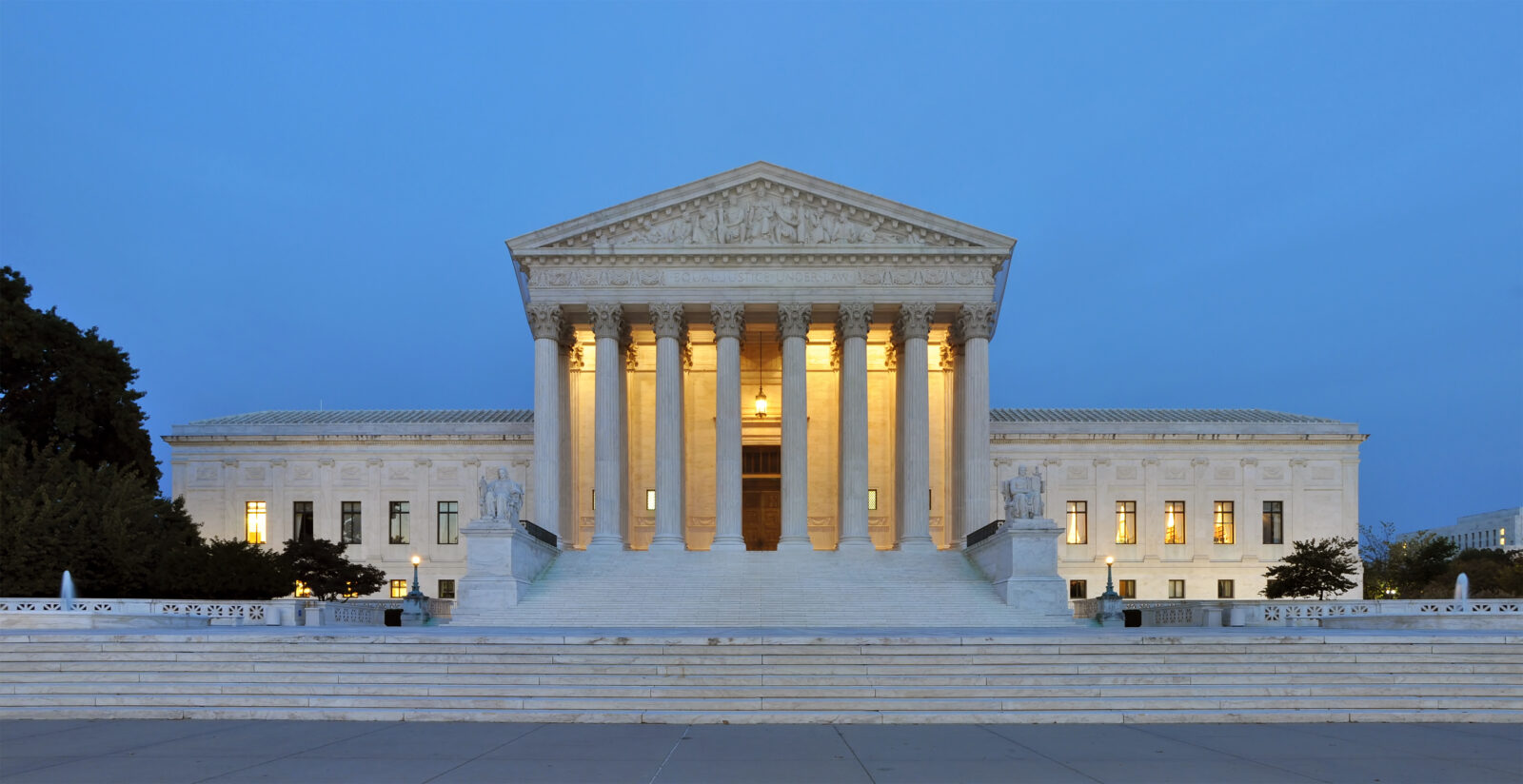What is the Supreme Court
The Supreme Court of the United States, colloquially referred to as “the Supreme Court”, is considered the highest court in the federal judiciary of the United States. It plays a vital role in shaping laws, acts as the final arbiter of disputes, and serves as an important check on the legislative and executive branches of the federal government. But what exactly is the Supreme Court, what is its composition, what powers does it wield, and why is it such an integral part of the American governmental system? This article will provide an in-depth look at the origins, functions, powers, landmark cases, and controversies surrounding the Supreme Court.
The Supreme Court of the United States is the highest federal court in the judicial branch of the federal government. It acts as the final appellate court for cases involving federal law, interpreting the Constitution, and determining whether laws passed by Congress or actions taken by the executive branch are constitutional. It has ultimate appellate jurisdiction, meaning it is the last resort for all cases heard in lower federal courts and state court cases involving federal law.
The Supreme Court consists of nine justices – one Chief Justice and eight Associate Justices. They are nominated by the President and confirmed by the Senate for lifetime appointments. The justices serve until they resign, pass away, or are impeached and removed by Congress.
The Supreme Court convenes in the Supreme Court building in Washington D.C. At its discretion, it receives around 7,000-8,000 petitions annually but usually hears oral argument in only 100-150 cases per term. When hearing a case, the Supreme Court acts as the trier and interpreter of the Constitution and federal law.
where is the supreme court located
The Supreme Court of the United States is located in Washington, D.C. Specifically, it is situated at 1 First Street NE, Washington, D.C., 20543.
History and Origins
The Supreme Court was established by Article III of the U.S. Constitution in 1789. It outlined the establishment of a Supreme Court but left specifics about its composition and structure up to Congress.
The Judiciary Act of 1789
The first Congress passed The Judiciary Act of 1789, which officially created the Supreme Court and established that it would consist of one Chief Justice and five associate justices. It also divided the country into judicial districts and created the position of Attorney General.
The act gave the Supreme Court original jurisdiction over certain cases but appellate jurisdiction over the vast majority of cases. This allowed it to focus on its most important duty – determining constitutionality of federal laws and actions.
Establishing Judicial Review
An important Supreme Court ruling in 1803, Marbury v. Madison, established the principle of “judicial review”.
This gave the Supreme Court power to deem acts of Congress as unconstitutional through checking them against the highest law of the land – the Constitution. This precedent helped establish the Supreme Court as an independent and co-equal branch of government.
Composition of the Court
The composition of the Supreme Court has changed over time, with Congress adjusting the number of justices on the Court.
Number of Justices
The Judiciary Act of 1789 originally established six total justices – one Chief Justice and five associate justices. But Congress has passed various acts over the years altering the composition of the Court.
It expanded to seven justices in 1807, nine in 1837, and eventually reached a high of ten justices in 1863. It was briefly reduced to seven in 1866 but returned to nine justices in 1869, which is where it stands today.
Appointment Process
Supreme Court justices are appointed through nomination by the President and confirmation by the Senate.
The President announces a nomination to fill a vacancy, and the nominee must pass background checks and investigations before going through Senate hearings to determine their qualifications. The Senate Judiciary Committee then votes on whether to send the nomination to the full Senate for a confirmation vote.
A simple majority (51 votes) is required for confirmation.
Lifetime Appointments
Supreme Court justices receive lifetime appointments and serve until they resign, pass away, or are impeached and removed by Congress.
There is no mandatory retirement age for Supreme Court justices. The lifetime appointment is designed to insulate the Court from political pressure and allow justices to make decisions based on their best interpretation of the law without worrying about political repercussions.
Powers and Jurisdiction
The Supreme Court wields considerable power and jurisdiction over the judicial system.
Judicial Review
The power of judicial review established in Marbury v. Madison allows the Supreme Court to deem Congressional acts or executive actions as unconstitutional if they conflict with the Court’s interpretation of the Constitution.
This makes the Supreme Court the ultimate authority and final arbiter on constitutionality, acting as a check against the legislative and executive branches.
Original and Appellate Jurisdiction
The Supreme Court possesses both original jurisdiction and appellate jurisdiction.
Original jurisdiction means the Supreme Court is the first and only court to hear certain cases, outlined in the Constitution and federal law. These cases involve disputes between states or disputes arising under federal law involving states.
Appellate jurisdiction means the Supreme Court can hear appeals on cases previously ruled on by lower courts. Most cases reach the Supreme Court through appeals, with the Court deciding whether to hear oral arguments and issue a final ruling.
Landmark Cases and Decisions
Over two centuries, the Supreme Court has made momentous rulings on highly important cases that have shaped laws and policies across the nation.
Marbury v. Madison (1803)
As noted earlier, this pivotal case established judicial review and the Supreme Court’s authority to rule acts of Congress as unconstitutional.
Brown v. Board of Education (1954)
This famous case ruled racial segregation of public schools unconstitutional, profoundly impacting civil rights and the country’s movement toward equality under the law for all citizens.
Roe v. Wade (1973)
This landmark case ruled that a woman’s right to an abortion was protected under the implied right to privacy in the 14th Amendment of the Constitution, establishing an important precedent on reproductive rights that remains controversial today.
Other Notable Cases
Other landmark Supreme Court cases have established important precedents and principles around voting rights, presidential powers, freedom of speech, freedom of religion, LGBTQ rights, and civil liberties.
Current Supreme Court
The Supreme Court continues to evolve, with new developments shaping its composition and direction.
Current Justices
The Supreme Court currently has eight associate justices and one chief justice:
- Chief Justice John Roberts (appointed in 2005)
- Justice Clarence Thomas (appointed in 1991)
- Justice Stephen Breyer (appointed in 1994)
- Justice Samuel Alito (appointed in 2006)
- Justice Sonia Sotomayor (appointed in 2009)
- Justice Elena Kagan (appointed in 2010)
- Justice Neil Gorsuch (appointed in 2017)
- Justice Brett Kavanaugh (appointed in 2018)
- Justice Amy Coney Barrett (appointed in 2020)
Recent Appointments
Recent appointments have maintained a conservative majority on the Court, with the three justices appointed under President Trump being decidedly conservative replacements for more liberal justices. The impact of these appointments on major cases like abortion rights continues to play out.
Controversies and Criticisms
While an integral part of government, the Supreme Court faces ongoing controversies, criticisms, and scrutiny.
Politicization
Critics argue the nomination and confirmation process has grown increasingly partisan and political in recent decades, undermining the Court’s independence. They see recent appointments as overtly political.
Lack of Diversity
Some critique the lack of diversity of the Court throughout its history in terms of race, gender, religion, and background. Most justices have been white men, with only five women and three Black men ever appointed in over two centuries.
Lifetime Appointments Debate
Lifetime tenure for justices comes under frequent criticism and debate about whether term limits or mandated retirement ages should be imposed. Critics believe lifetime appointments grant too much unchecked power.
Conclusion
Importance and Legacy
Despite controversies, the Supreme Court remains vital to America’s system of justice, shaping the direction of laws and acting as a guardian of citizens’ constitutional rights. Its rulings have left a profound impact on American society and discourse.
Ongoing Evolution
The Supreme Court continues to evolve, shaped by presidential appointments that steer its ideological composition in new directions. Its future direction on major issues remains uncertain and hotly debated. Yet its essential role in government endures.
Frequently Asked Questions
What are the qualifications to become a Supreme Court justice?
There are no defined qualifications, but justices typically have judicial experience, extensive legal expertise, and distinguished backgrounds. Most served as judges, law professors, high-ranking Justice Department officials, or private attorneys before joining the Court.
How are Supreme Court justices selected?
Justices are nominated by the President and confirmed by a simple majority vote in the Senate. Prior to confirmation, nominees go through extensive vetting and public hearings.
Can Supreme Court decisions be appealed?
No, Supreme Court decisions cannot be appealed. The Supreme Court has the final say in cases under its jurisdiction, establishing a binding precedent and the law of the land.
How many votes are needed for a Supreme Court decision?
A simple majority of justices (at least five votes) is needed for a decision. If the justices split 4-4, the lower court’s ruling stands.
Can the President or Congress overturn Supreme Court decisions?
No, but Congress can pass new laws or propose constitutional amendments to undermine or override Supreme Court decisions in certain policy areas.








